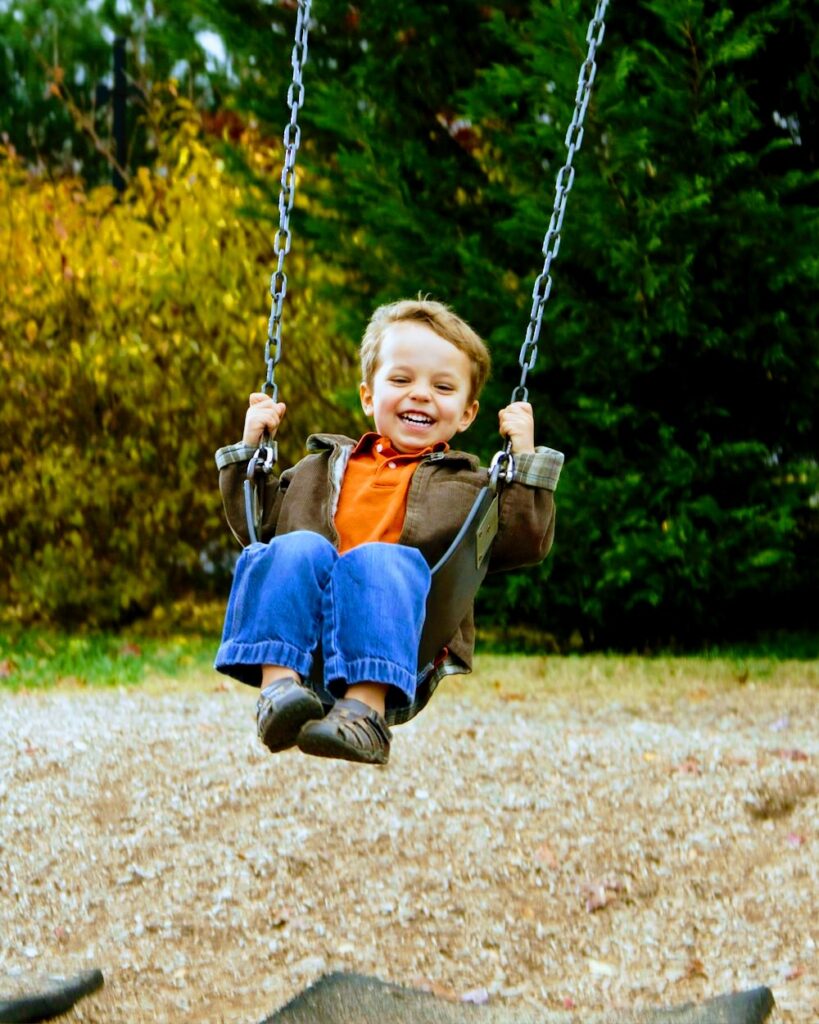Autism and swinging have long been linked together. Below we explore the activity and why it can be such a desirable activity for kids with autism.
Raising a child with ASD can bring a whirlwind of emotions and a unique set of challenges.
Among these is understanding their distinctive behaviours and preferences, such as a love for swinging.
This article aims to shed light on why children with autism are drawn to swinging.
We will also explore how parents can embrace this activity to nurture their child’s development and happiness.

Understanding the link between swinging and autism
Children with autism experience the world differently. Sensory experiences, which might be mundane for others, can be profound and impactful for them.
Swinging offers a unique sensory input that many children with autism find soothing and enjoyable.
The rhythmic motion provides a predictable and controlled sensory experience.
This can be calming in a world that often feels chaotic and overwhelming to them.
Additionally, swinging helps in the development of vestibular senses. These are inputs crucial for balance and spatial orientation.
Areas often needing support in children with autism.
Benefits of an autistic child swinging
We thought it may be helpful to list some of the benefits of an autistic child embracing swinging.
Sensory Integration: Swinging is an excellent way for children with autism to experience vestibular and proprioceptive input, helping them understand and regulate their bodies in space.
Calming Effect: The rhythmic motion of swinging can have a calming effect on children, reducing anxiety and helping with emotional regulation.
Improving Focus and Attention: The soothing effect of swinging can also aid in improving concentration and attention spans. This is particularly beneficial in educational settings or during learning activities at home.
Enhancing Social Skills: While swinging is often a solitary activity, it can also be a social experience, encouraging interactions with peers and family members.
What should parents of children with autism do about swinging?
Naturally parents will have differing views in terms of if they should encourage swinging or not.
If you do decide that as a family you are going to embrace this desire, here’s how you can do so.
Setting Up a Swing at Home: Consider installing a swing in your home or garden. This provides a safe and accessible space for your child to enjoy swinging anytime they need it.
Regular Park Visits: Schedule regular visits to local parks with swings. This not only allows your child to engage in their favorite activity but also offers opportunities for outdoor exercise and social interactions.
Incorporate Swinging into Routines: Use swinging as a tool to create structured routines. As we know, routines are often comforting for children with autism. It can be an activity to look forward to after completing homework or chores.
Swinging as a Reward: Utilise swinging as a positive reinforcement or reward for desired behaviors. This can be an effective motivational tool for your child.
It’s important to approach your child’s love for swinging with understanding and support.
Recognising that this activity is more than just play, but a vital part of their sensory and emotional world.
This can deepen your connection with your child. Here are some further tips;
Educate Yourself and Others: Learn about sensory processing and how it affects children with autism. Share this knowledge with family members, friends, and teachers to foster a supportive environment.
Observation and Adaptation: Pay attention to how your child interacts with swinging. This can give you insights into their sensory preferences and needs, allowing you to better support them.
Summary – Autism and swinging
Understanding why your child with autism is drawn to swinging and embracing this activity can significantly enhance their well-being.
It offers sensory benefits, emotional regulation, and opportunities for social development.
As a parent, your support and acceptance in this aspect of their life can make a significant difference.
Remember, each child with autism is unique, and their affinity for swinging is a part of their individual journey.
By embracing and understanding this, you help create a nurturing and understanding environment where they can thrive.
Any tips or ideas?
We would love to hear from you if you have got any techniques or ideas for our readers to try.
Be sure to leave a comment if any of the above has helped or if you have any ideas we can add to this article.
Also be sure to search for any other articles you might find helpful.
Try for example searching below for topics like ‘meltdown’ or ‘communication’.

